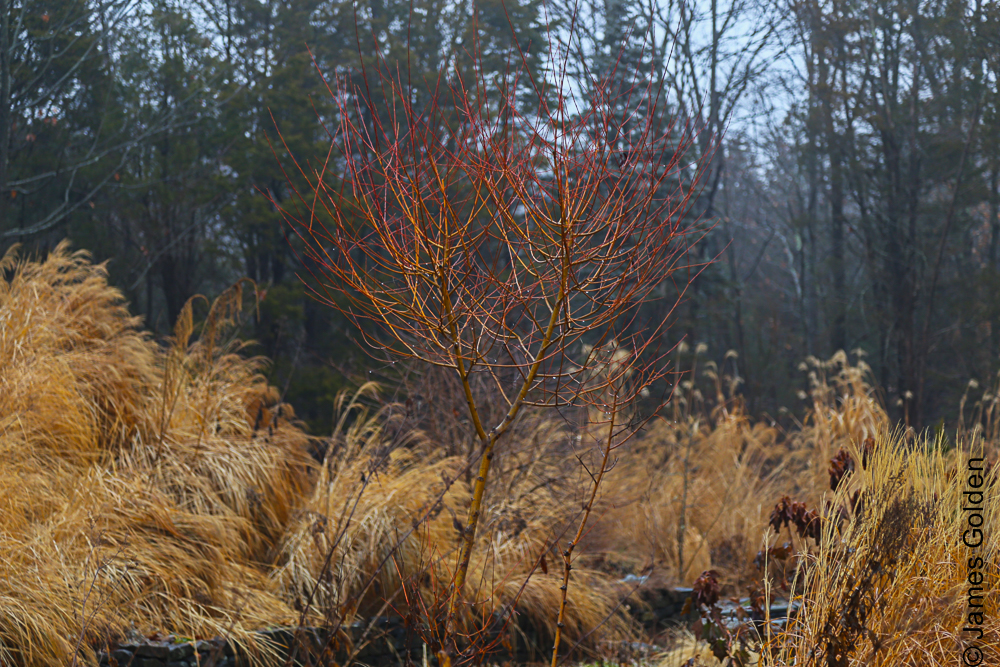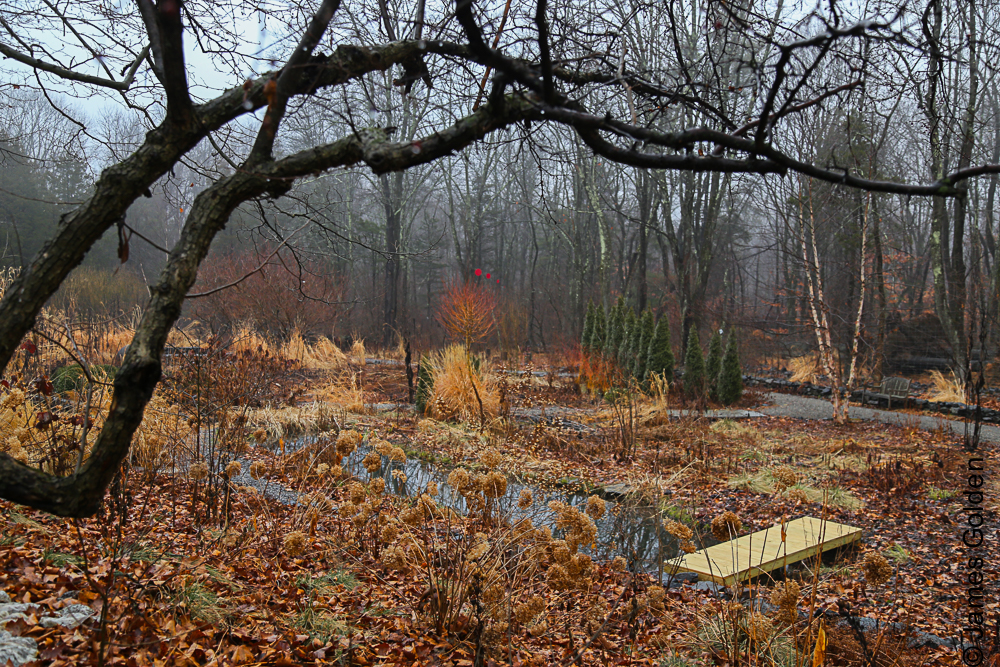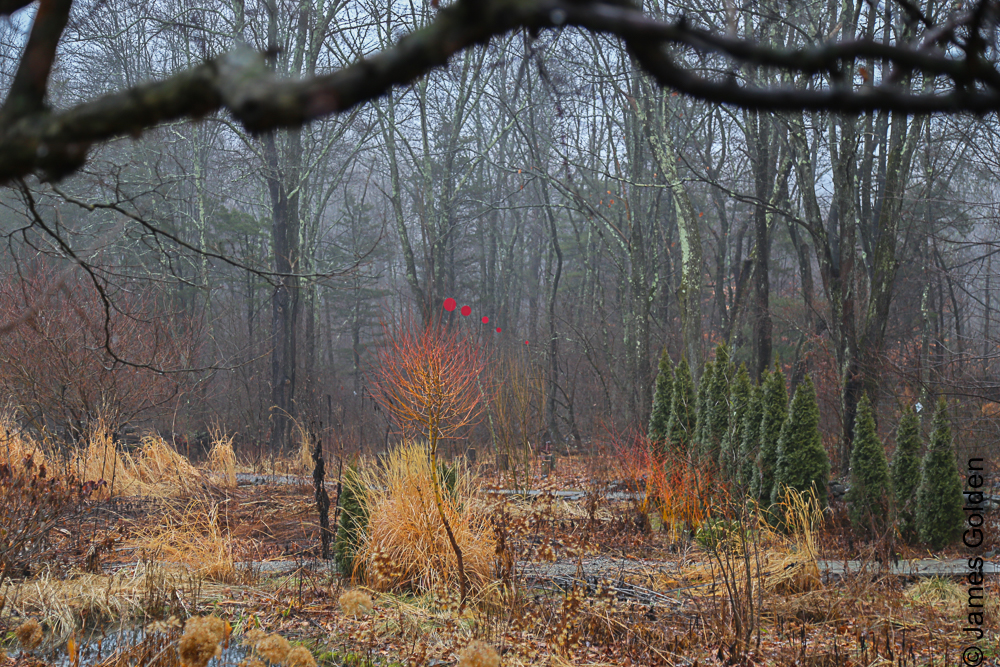In praise of weather (again)
I look at photos of Dutch and British gardens and am a little envious to see how long and gentle their autumns seem to be. Our climate in the Northeast US is vastly different; our foul and stormy weather often comes much sooner. The garden was decimated by snow and freezing rain Thanksgiving week, two months earlier than last year. This is about what remains.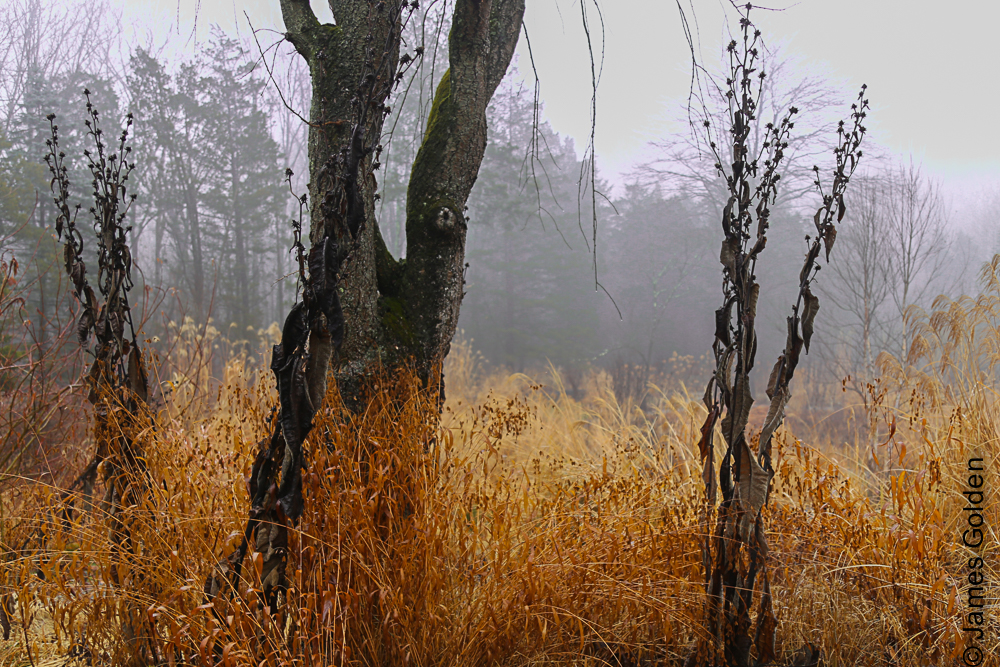 Having a largely perennial garden, I have to find beauty in early destruction. It helps to think of the garden as a form of abstract art that incorporates a large measure of randomness and chance.
Having a largely perennial garden, I have to find beauty in early destruction. It helps to think of the garden as a form of abstract art that incorporates a large measure of randomness and chance.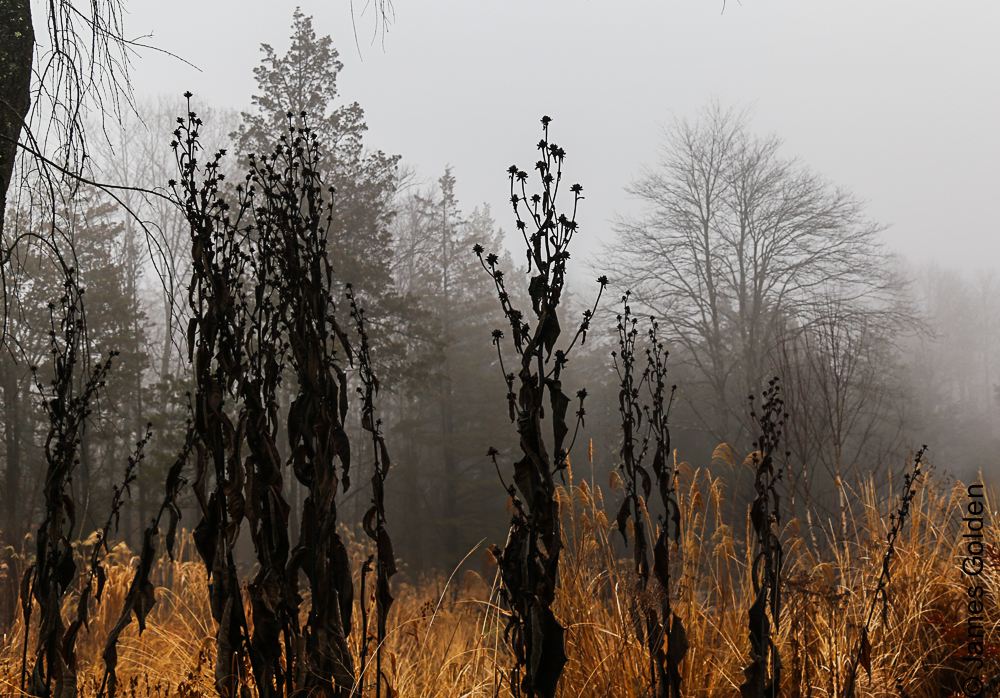 Fog helps. Fog makes even tattered grasses appear to glow with an intensity they have at no other time. It casts the dark of tree trunks and the spectral skeletons of Inula racemosa into stark relief.
Fog helps. Fog makes even tattered grasses appear to glow with an intensity they have at no other time. It casts the dark of tree trunks and the spectral skeletons of Inula racemosa into stark relief.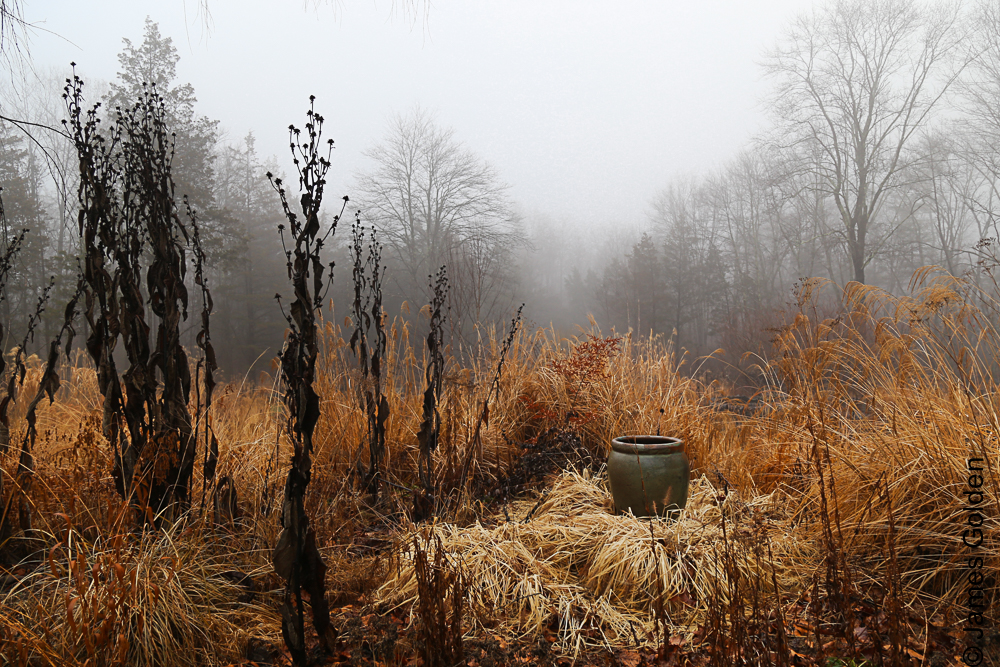 Fog suggests mystery, the indefinable, the ineffable--what can't be expressed in words.
Fog suggests mystery, the indefinable, the ineffable--what can't be expressed in words. It's nothing extraordinary, common in fact, a Romantic commonplace, but I never grow tired of seeing a garden, or pretty much any scene, in fog. It's all about changed mood and atmosphere.
It's nothing extraordinary, common in fact, a Romantic commonplace, but I never grow tired of seeing a garden, or pretty much any scene, in fog. It's all about changed mood and atmosphere.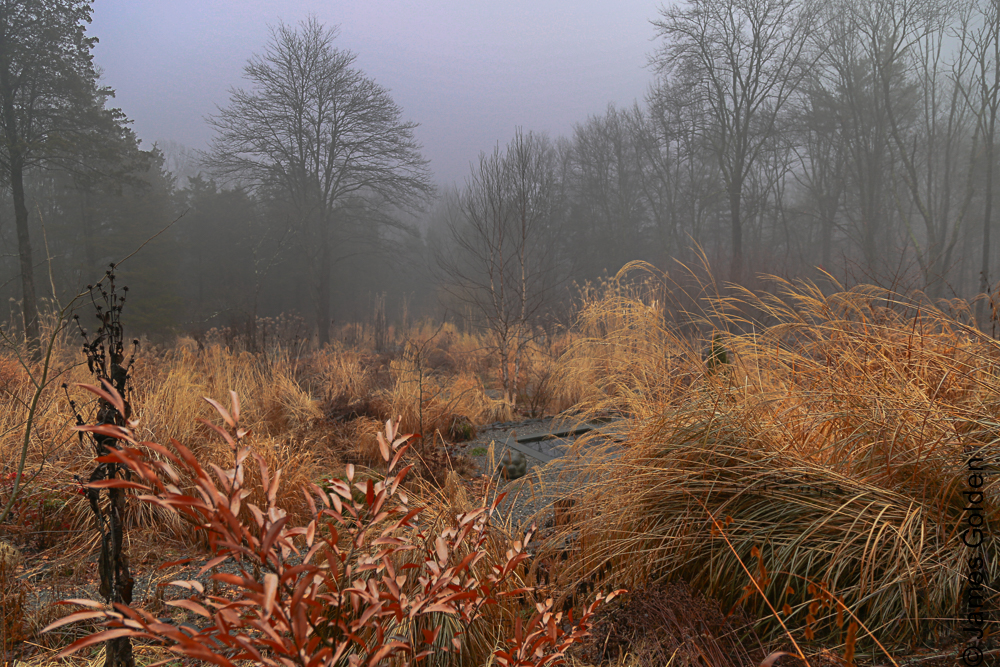 Fog unifies the garden with its surroundings by blurring the edges. And it elicits a deeper response, often suggesting metaphor to capture an elusive emotion.
Fog unifies the garden with its surroundings by blurring the edges. And it elicits a deeper response, often suggesting metaphor to capture an elusive emotion.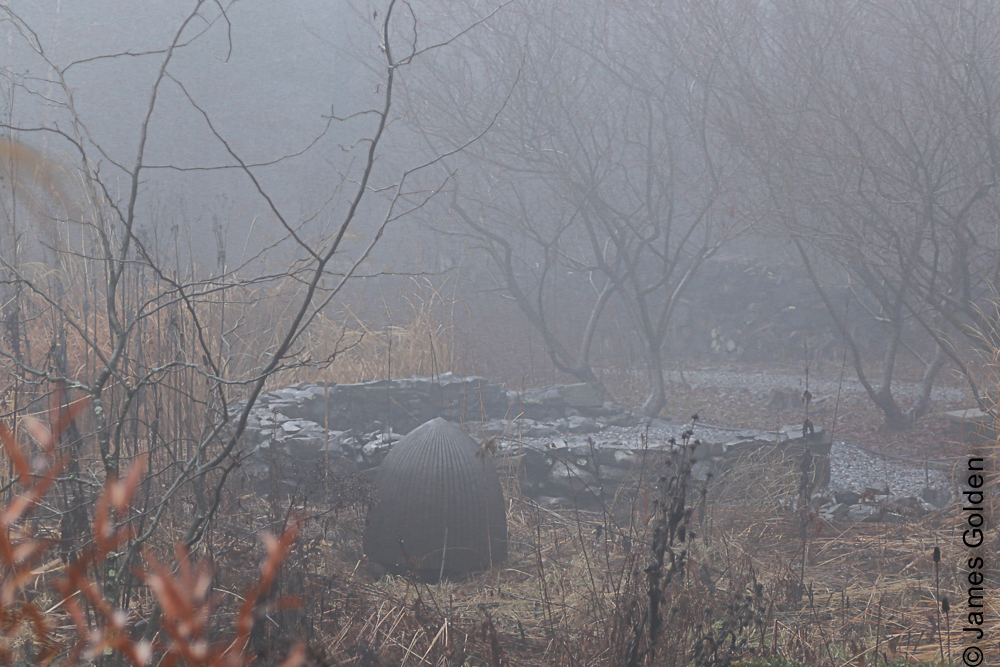 It even gives my partially complete stone circle a patina of age, makes it seem more ancient, ruin-like.
It even gives my partially complete stone circle a patina of age, makes it seem more ancient, ruin-like.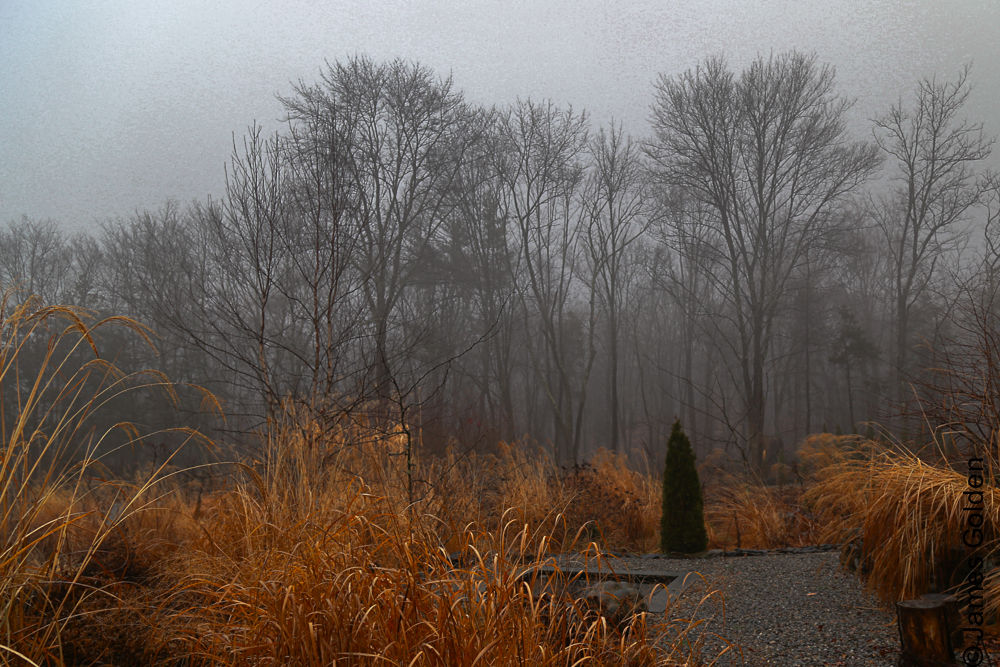 Apart from shrubs and small trees and stone, this season most of the remaining garden consists of two plants--Miscanthus, in various cultivars, and the Wolfgang Oehme-inspired Inula racemosa 'Sonnenspeer'. There are other plants still standing, of course, but these two predominate now.
Apart from shrubs and small trees and stone, this season most of the remaining garden consists of two plants--Miscanthus, in various cultivars, and the Wolfgang Oehme-inspired Inula racemosa 'Sonnenspeer'. There are other plants still standing, of course, but these two predominate now.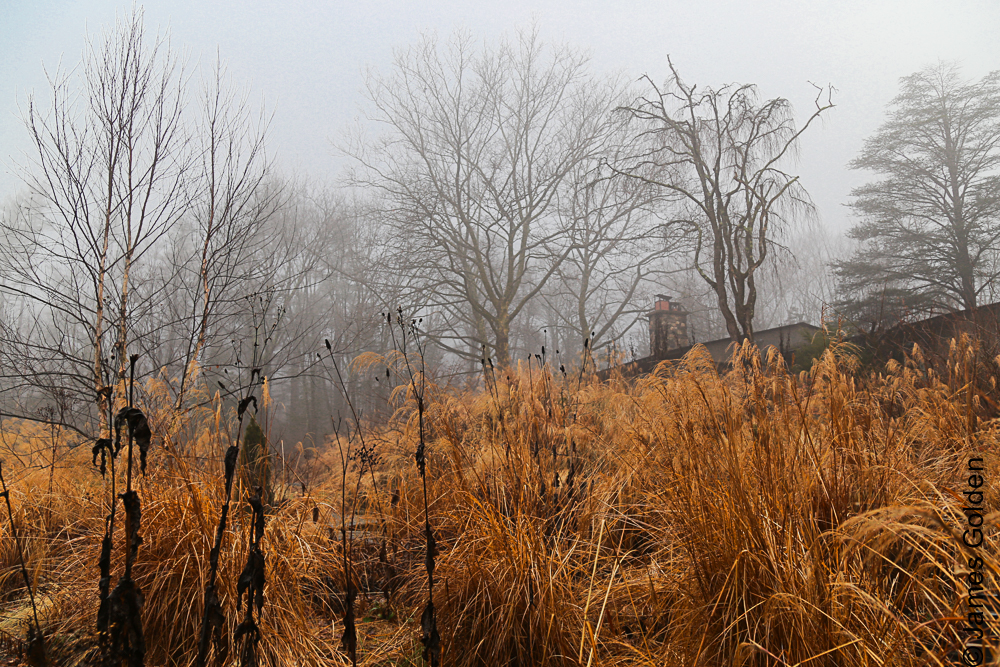 Though the plantings wear thin in January, it's still possible to feel immersed in the garden, to look up to the house and feel it's a long way off.
Though the plantings wear thin in January, it's still possible to feel immersed in the garden, to look up to the house and feel it's a long way off.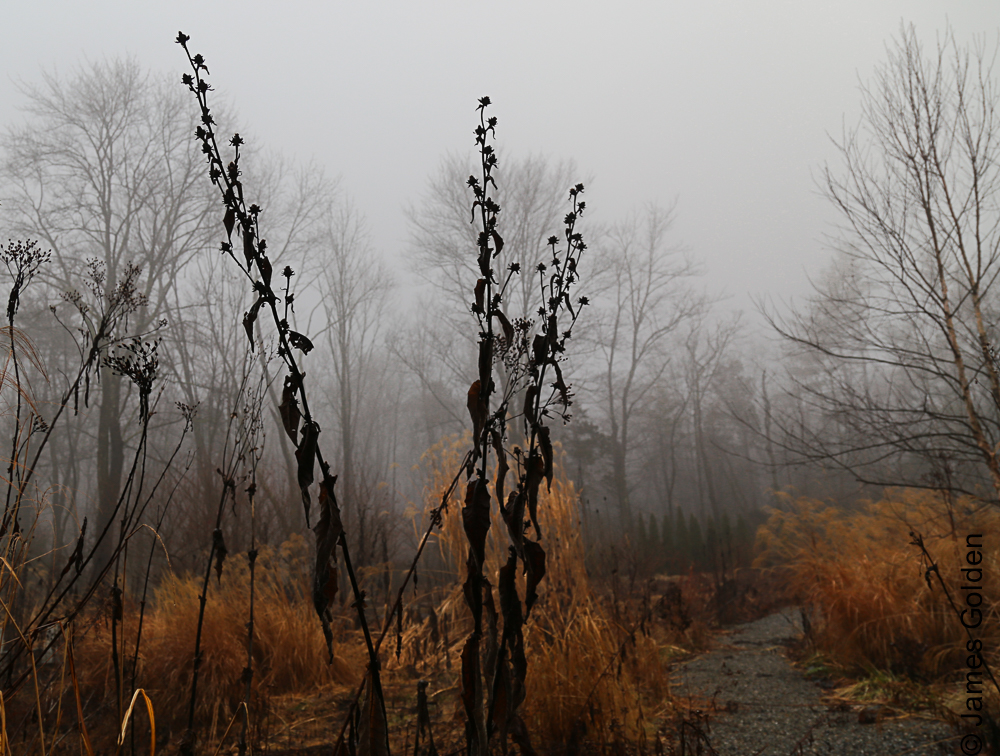 Vertical and tilted lines of Inula still make interesting compositions against the warm grasses and foggy woods beyond the garden's edge ...
Vertical and tilted lines of Inula still make interesting compositions against the warm grasses and foggy woods beyond the garden's edge ...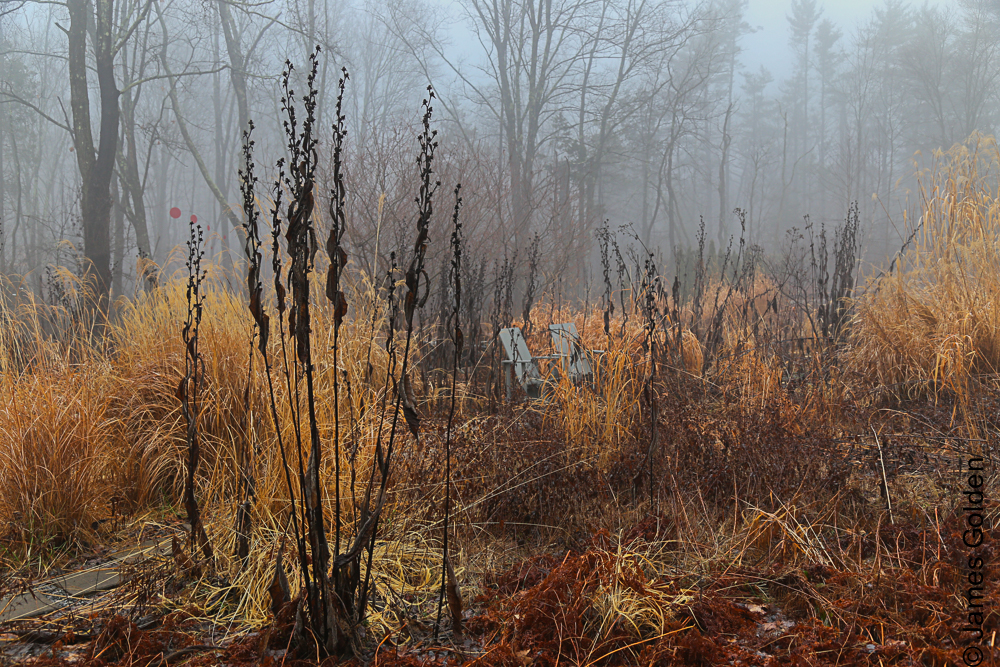 ... and contrast with the manmade structure of two Dan Benarcik chairs.
... and contrast with the manmade structure of two Dan Benarcik chairs.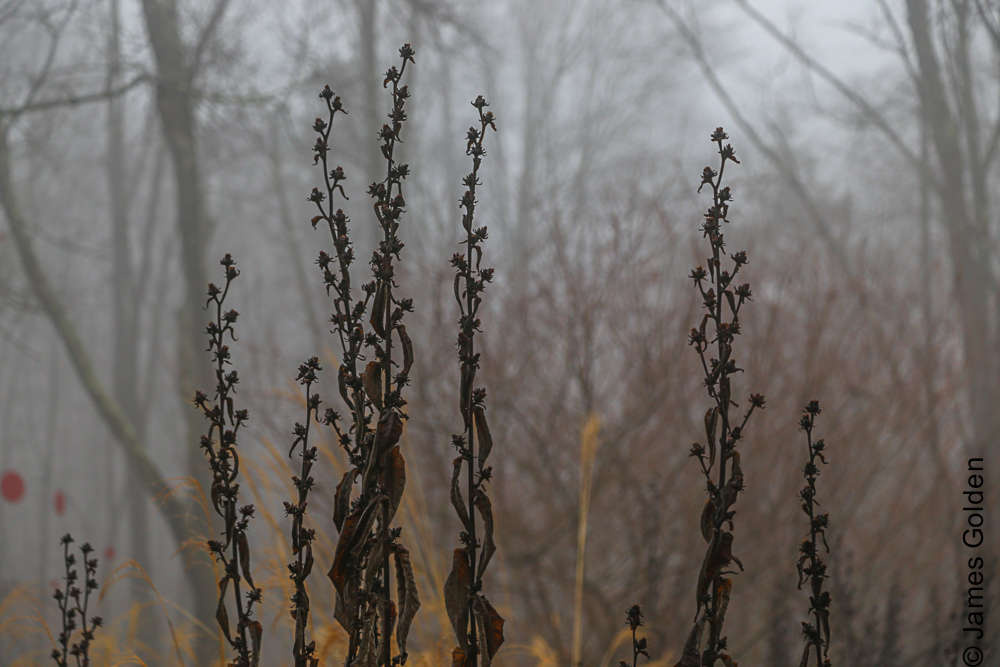 Twisted stems of the Japanese fantail willow (Salix sachalinensis 'Sekka') are a warm brown; they will grow redder as the season progresses, hinting of spring.
Twisted stems of the Japanese fantail willow (Salix sachalinensis 'Sekka') are a warm brown; they will grow redder as the season progresses, hinting of spring.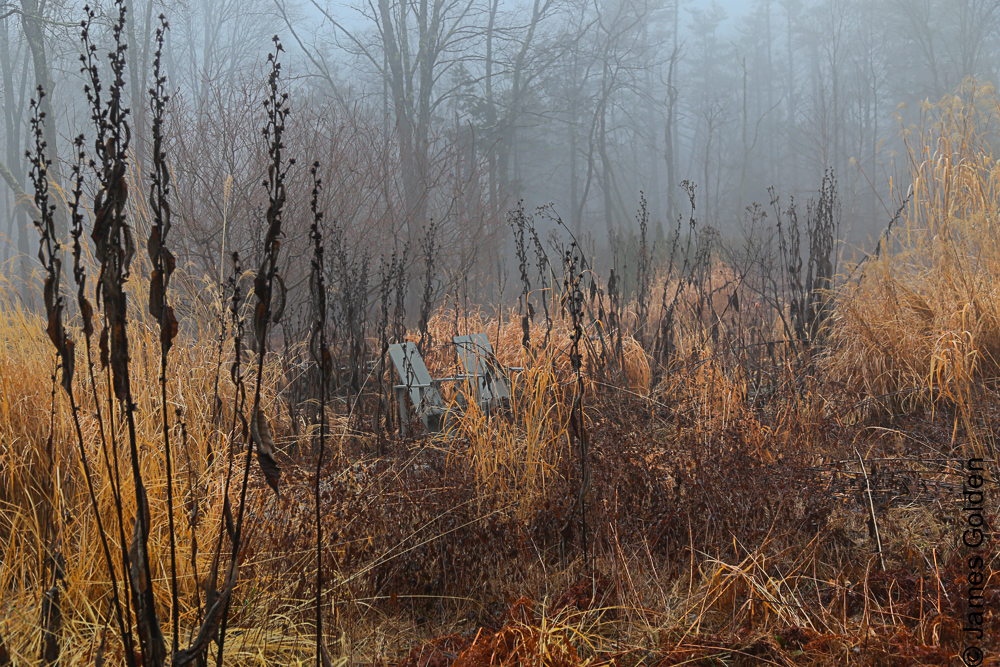
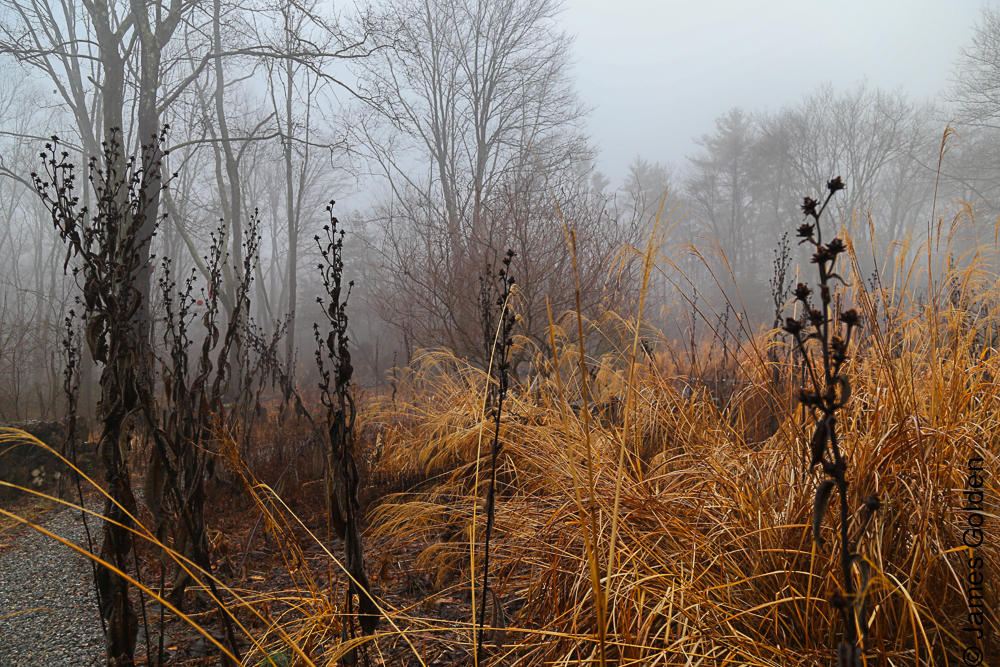 An Inula steeply leaning over a collapsed bed of Miscanthus 'Silberfeder' (among the floppiest grasses in my garden) creates tension and drama in an otherwise neutral scene, all made more dramatic by the foggy blurring of the background trees.
An Inula steeply leaning over a collapsed bed of Miscanthus 'Silberfeder' (among the floppiest grasses in my garden) creates tension and drama in an otherwise neutral scene, all made more dramatic by the foggy blurring of the background trees.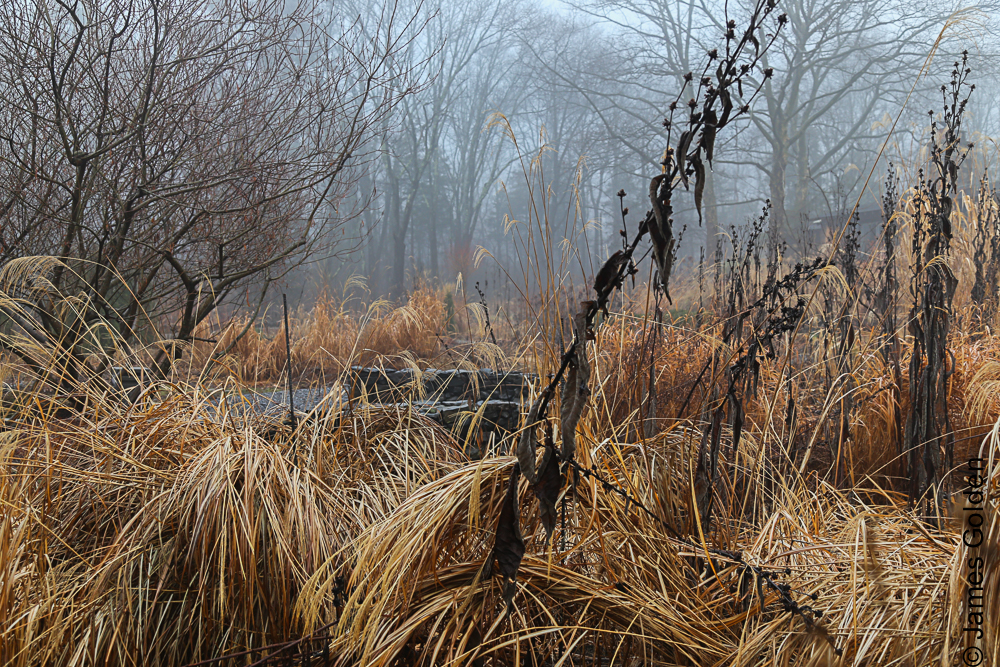
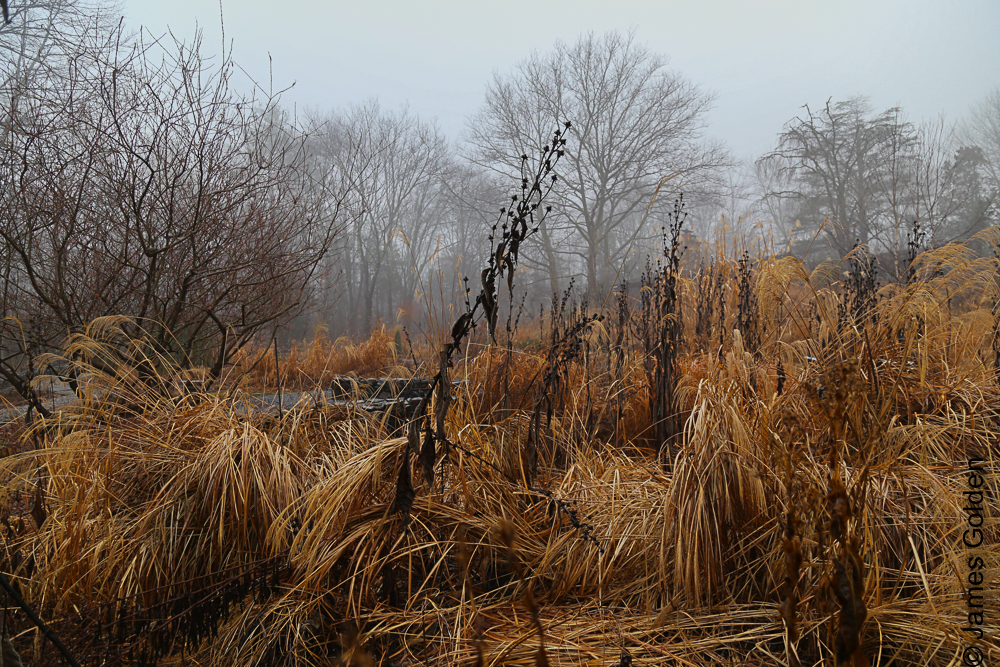

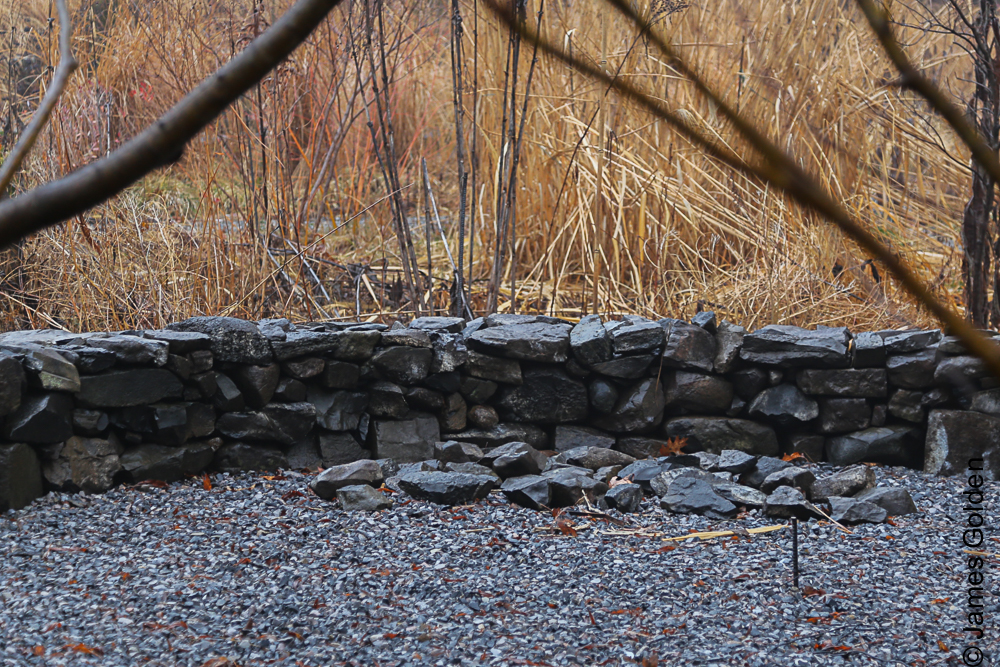 Another willow, Salix alba 'Britzensis', made redder by the fog. This one I'm training to grow as a pollarded tree.
Another willow, Salix alba 'Britzensis', made redder by the fog. This one I'm training to grow as a pollarded tree.